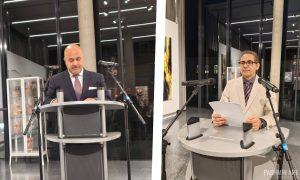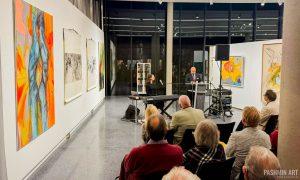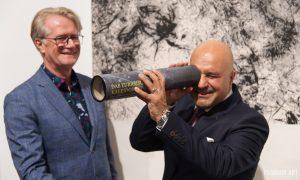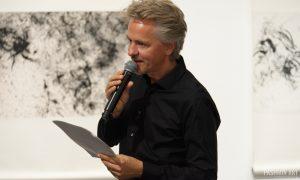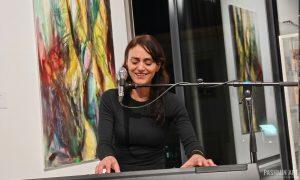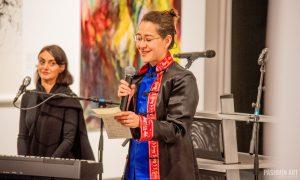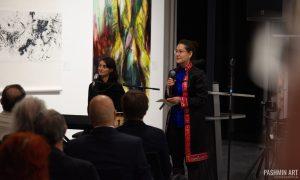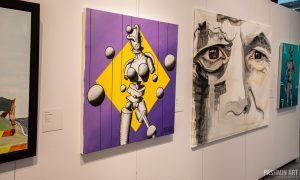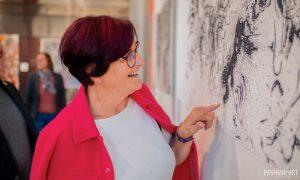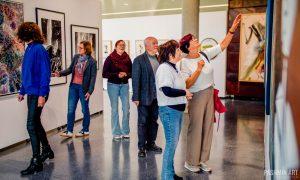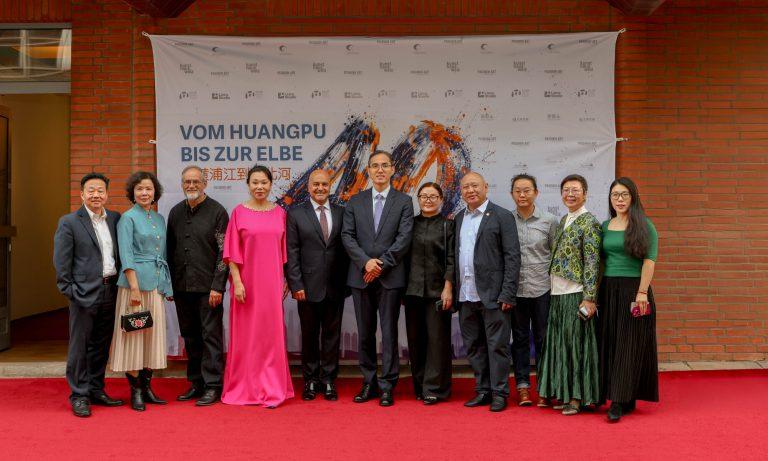A Landmark Dialogue Between European and Asian Contemporary Art
Weiz, Austria — October 2025.
The international exhibition The Eurasian Kaleidoscope, held from 26 September to 31 October 2025 at Kunsthaus Weiz, brought together fifteen artists from across Europe and Asia in a compelling exploration of transformation, perception, and the human condition. Organized in cooperation with Pashmin Art Consortia and curated by Georg Gratzer and Nour Nouri, the show unfolded as a visual dialogue between cultural traditions and contemporary experimentation.
At the opening on 25 September 2025, Georg Gratzer welcomed the audience, followed by guest speeches from Nour Nouri (Director, Pashmin Art Consortia) and Dr. Davood Khazaie (International Curator), whose lecture illuminated the philosophical and intercultural dimensions of the exhibition. Hermann Mauritsch (Cultural Councillor of Weiz) officially inaugurated the event, accompanied by the musical performance of SAEDI, whose piano compositions provided an evocative atmosphere of reflection and exchange.
A Cross-Continental Vision
Through painting, sculpture, and photography, the exhibition demonstrated how artistic expression can bridge continents and philosophies. From Zhang Dawo’s calligraphic abstractions, uniting rhythm and spirituality, to Peter Backhaus’s expressive energies that probe the psyche and transformation, each artist contributed a unique voice to the shared question of how art reflects human depth and renewal.
Julia Stärz-Wilhelm, Annina Laely, and Anna van den Hövel expanded this dialogue into abstraction. Stärz-Wilhelm’s layered acrylics combined elemental vitality with introspective calm; Laely’s luminous landscapes translated the rhythm of nature into emotional color fields; and van den Hövel’s textured surfaces, made from acrylic, lacquer, and earth, merged material and emotion into poetic topographies.
Expression, Form, and the Human Image
Figurative works grounded the exhibition’s emotional core. Nathalie Bopp’s portraits — such as Bras dessus – Bras dessous and A scrutinising look — examined communication and empathy through finely balanced gestures and psychological tension. Adam Gabriel explored identity and memory in intimate studies of the human body, while Mikael Jensen merged Jungian archetypes and dream imagery into visual reflections on transformation.
Horst Wagner juxtaposed vivid color and expressive form with existential unease, turning human fragility into painterly resilience. Alessandro Cardamone’s neo-cubist compositions reimagined harmony and vitality through fragmented yet lyrical figures, infusing modern geometry with Mediterranean warmth.
Nature, Legacy, and Contemporary Culture
The natural world and its spiritual resonance appeared as another unifying thread. Donat Kamber’s series The Light of Switzerland – Mesmerising Waterfalls I–IV captured the monumental power and fragility of Alpine landscapes in finely composed monochrome photographs, evoking stillness, motion, and time. Oleg Soul’s dynamic works, meanwhile, celebrated individuality and inner energy through gestural figurative-abstraction that balanced movement and calm.
A bridge to Europe’s postwar heritage was represented by Richard Hoffmann, with seventy-year active artistic. His concept of “cell tectonics” embodied the structural and philosophical rigor that continues to shape modern visual thought.
Theodoros Nikolaidis and Blonde Monkey brought contemporary contrast and cultural critique: Nikolaidis’s lion sculptures and Lamborghini painting examined myths of power and rebirth through metallic texture and symbolic force, while Blonde Monkey’s luminous Pop–Op canvases reimagined cultural icons through intense chromatic contrasts, capturing the rhythm of modern spectacle.
A Shared Artistic Journey
The Eurasian Kaleidoscope presented not a geographical comparison but a spiritual and intellectual dialogue — a recognition of how artistic creation, whether born in Beijing or Berlin, stems from the same search for connection and meaning. With its balance of reflection and vitality, the exhibition reaffirmed Pashmin Art Consortia’s mission to build bridges across continents and philosophies through the universal language of art.
Venue: Kunsthaus Weiz, Rathausgasse 3, 8160 Weiz, Austria
Duration: 26 September – 31 October 2025
Curators: Nour Nouri, Georg Gratzer
Organizers: Pashmin Art Consortia, Kunsthaus Weiz
Art Lecture: Dr. Davood Khazaie
Opening: Hermann Mauritsch
Musical Guest: SAEDI
Links:


